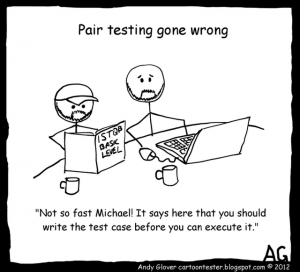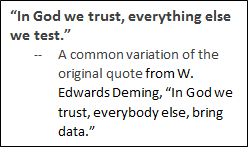
Technology implementations have been a fundamental part of business for many years. By now, you would think companies would have figured out how to do them right, every time. Or at least how not to do them wrong. But they haven’t. Why? Is there a way to make sure your technology investment, talent technology in particular, delivers its bang for the buck?
The answer, of course, is yes. It’s all about the details. That includes the details of the technology itself, the processes it is meant to support, and the people it is meant to empower. The success of your talent technology investment is riding on the ability of your organization to maintain a laser-like focus on those details. The devil lives in those details, and in the case of a technology investment, there is one way to contain that devil before it has a chance to cause havoc: testing.
Testing is not a secret. It’s not glamorous. For most people, it’s boring. Your boss probably doesn’t want to hear you talk about testing. She just wants to make sure you’re sticking to your go-live date. It’s no wonder that planners often take short-cuts through the testing process. When they do, the details come back to haunt them soon after go-live.
 That’s why, for me, testing is exciting. After all you’ve done to get through implementation — securing the budget, gaining buy-in, selecting a system, aligning processes and configuring to your needs — testing is your bridge to a successful outcome. My clients depend on me to be excited about it. Developing a thorough testing strategy that validates the entire system configuration can be daunting, but it’s necessary if you don’t want to deal with the potential of rework, of worse, system failure after go-live. Here are some of the things that go into an effective testing strategy:
That’s why, for me, testing is exciting. After all you’ve done to get through implementation — securing the budget, gaining buy-in, selecting a system, aligning processes and configuring to your needs — testing is your bridge to a successful outcome. My clients depend on me to be excited about it. Developing a thorough testing strategy that validates the entire system configuration can be daunting, but it’s necessary if you don’t want to deal with the potential of rework, of worse, system failure after go-live. Here are some of the things that go into an effective testing strategy:
- Start with the processes. You need to be sure your test plan includes all relevant processes, from data feeds and task execution to reporting and analytics. Most platforms do a great job in all of these areas, but failing to tie the platforms’ capabilities and testing to YOUR requirements will result in the aforementioned confusion and potential re-work. By applying scenario-based testing with scripts, you can identify task sequences, roles, and expected outcomes that relate to real-world processes.
- Build the right team. It is important to have the system reviewed and tested from every perspective; the goal is to avoid overlooking attributes that might not be important to some but are essential to others. Stakeholders from all segments of the business need to be involved. This includes IT and/or HR information systems representatives, HR business partners, managers and end users from operations. For global activations, testing should include representatives from all geographies. A well-rounded team not only facilitates more effective testing, it can also be the starting point for training super users and change management champions. Another often-overlooked consideration is the time and commitment needed from the team. This includes the time it takes to do the testing, document results, implement corrective actions and then retest if needed. Testing responsibilities, including schedules and approach, should be arranged and clear to all participants.
- Stick to the plan. Lack of continuity is a common shortfall in the testing process. Any change in processes, decisions or team members can send your testing process back to square one. If you ignore that need and continue anyway, unforeseen problems will slip through. A testing lead provides a vital connection between all parts of the process and makes sure this doesn’t happen. The test lead should capture issues and feedback in a log, assign action items, escalate as necessary and track problems through to closure. The test lead should also debrief with the team daily and provide updates on progress and issue resolution to the team and project sponsors. To be effective, the lead should be in place to make sure the process decisions and system configuration are finalized and documented.
Testing, unfortunately, is a part of an implementation that many organizations attempt to short cut due to time constraints or lack of resources. I’ve seen the issues that come from it, and re-work is expensive. If you want the best results from your systems and optimal user adoption, make time and validate the configuration by testing thoroughly. If you or your organization don’t have the time or resources to test it right, hire the resources you need. You may not be excited about testing, but there are people out there who are. They might be your talent technology investment’s best friends.


